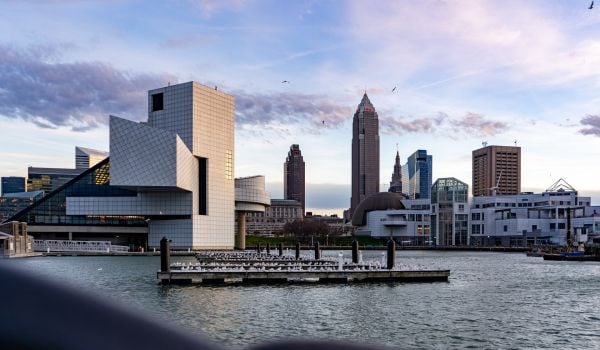The San Francisco Bay Area’s flood risk maps, produced by FEMA, use satellite radar to calculate city-by-city threats. One thing they don’t take into account, however: Bay-side cities aren’t just vulnerable to melting ice caps. They’re also sinking — sometimes at a rate of about a half-inch per year.
That’s the alarming conclusion from researchers at UC Berkeley and Arizona State University. Their paper, “Global Climate Change and Local Land Subsidence Exacerbate Inundation Risk to the San Francisco Bay Area” was published in the journal Science Advances this week. The Mercury News reports:
Much of the bay’s shoreline, because it is built on mud that compacts over time, is sinking at about 2 millimeters a year, roughly the thickness of a nickel … .
But prominent areas that were built on fill that was not densely compacted, including sand, gravel, garbage and other debris — such as San Francisco International Airport, Treasure Island and Foster City — are sinking at a much faster rate, about 10 millimeters, or nearly half an inch a year. They face a far more serious risk of being underwater not generations from now but much sooner.
The researchers also took advantage of satellite data, but paired it with “synthetic aperture radar interferometric measurements,” a technique used to measure tectonic deformation, ground subsistence and landslides. They conclude that while most widely available data states that an area between 51 and 413 square kilometers (or 19 and 159 square miles) is vulnerable to flooding, the at-risk area is actually bigger — ranging between 125 and 429 square kilometers (48 and 165 square miles).
FEMA’s flood-risk inaccuracies are hardly news at this point. New York’s maps are in the process of being redrawn with climate change in mind, but the tweaks are coming a bit late. And last year, roughly 40 percent of Hurricane Harvey’s flood victims in Houston didn’t have insurance because their homes weren’t located in the city’s supposed flood plain. Still, the idea that waters aren’t just rising — but cities like S.F. are also sinking — further complicates the already fraught flood insurance process.
Thankfully, in the Bay Area at least, governments have several choices to protect their homes and infrastructure, as the Mercury News points out. They can go the way of their East Coast cousins, and build up their supply of sea-walls and levees. Or, in a uniquely Northern California move, they can beef up their wetlands and hay fields to buffer waves and storms and reduce the impacts of flooding. (One proposal from the Bay Area Resilient by Design Challenge, which Next City has covered, outlined a way forward with those natural barriers). And local voters approved $500 million in new funding over the next 20 years for wetlands restoration and flood control in 2016.

Rachel Dovey is an award-winning freelance writer and former USC Annenberg fellow living at the northern tip of California’s Bay Area. She writes about infrastructure, water and climate change and has been published by Bust, Wired, Paste, SF Weekly, the East Bay Express and the North Bay Bohemian
Follow Rachel .(JavaScript must be enabled to view this email address)
















